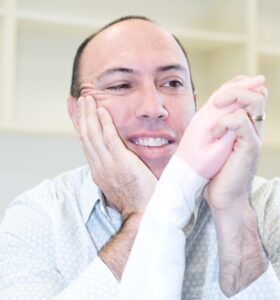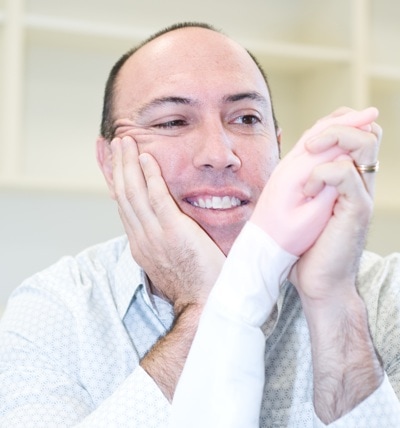In this, the oddly named 4th part of this little series, I am trying to get my head around the role of cytokines in facilitating long term potentiation and nurturing neuroplasticity. The key work in this field seems to be this[1] These guys were the first to show that an inflammatory-like process, the secretion of pro-inflammatory cytokine IL-1, occurs in key brain areas in association with long term potentiation – a process that Hebb described as ‘neurons that fire together, wire together’[2]. Other researchers have gone on to do the the usual things – show a relationship between LTP and IL-1 levels, show no LTP when IL-1 antagonist is injected, show no LTP in mutant mice without IL-1 manufacturing gene[3]. Here is where the story gets a bit juicier because the role of IL-1 is not just limited to the hippocampus and to spatial and related memory formations. IL-1 expression is associated with LTP in the dorsal horn, specifically at spinal nociceptors – the spinal projection of C-fibres – I am sure Mick Thacker or Mark Hutchinson could tell us about that, if either of you are watching….
IL-6, our swinging voter, sometimes anti-inflammatory sometimes pro-inflammatory, might have an important role in turning LTP off. That is, IL-6 is upregulated 4-8 hours after high-frequency stimulation of a mouse’s hippocampus, but if IL-6 is blocked by IV anti-IL6 antibodies, then LTP persists for longer4. So, stimulating the hippocampus, an experimental model of intensive spatial learning, increases IL-1 and IL-6 expression. IL-1 seems to be particularly important in establishing LTP and IL-6 seems to be important for turning it off. Extrapolating now to things we do not want to potentiate, one wonders if augmenting IL-6 might reduce the likelihood of LTP in the nociceptive system after acute injury, or in the circuits that subserve post traumatic stress syndrome. It would seem a pretty tough ask to do anything to IL-1 expression simply because of the time window, but IL-6? Could we get in there within 6 hours of the trigger? I reckon it is a chance. Anyone know of research to this effect? Mick? Mark?
If IL-1 and IL-6 are involved in LTP in the acute setting, TNF-α saves itself for later – mice that have impaired TNF signaling show normal acute LTP. However, animal vision experiments show that when TNF-α signaling is blocked genetically or by drugs, the animal does not show the normal adaptation of visual brain circuits, adaptations that are dependent on very LTP – plasticity that takes a long time to occur and involves structural changes for example pruning of dendrites and establishment of new synapses5. This too has clear potential implications for chronic pain and PTSD – we know that functional and structural changes occur in the brain in people with chronic pain and PTSD – it is possible that TNF-α is somehow involved in this? In CRPS research, TNF-α expression is heightened and there is some evidence that anti-TNF-α treatment can be effective, although more work is required – here is a great review by Frank Birklein and here is Frank Birklein!
Finally, the prostaglandins. No surprises here – prostaglandins have a role in LTP – the usual methods have shown this. Again though, this might have a direct application to us – selective COX-2 inhibitors impair LTP in the mouse hippocampus, which raises the possibility, not completely outrageous or remote, that taking a bit of ibuprofen impairs the LTP that contributes to chronic pain. I know that COX-2 inhibitors are proposed to limit the development of chronic pain in several ways, but this is a mechanism I do not immediately think of. We tend to think of anti-inflammatories as a solely peripheral thing, which clearly they are not.
The other thing that is clear is that I need to rescue myself from this slippery slope of neuroimmunology – I can feel it seducing me with its complexity and apparent potential. I aim going to stand my ground, be faithful to my neurocentric roots and delay the last post of this series so I can get back to some of my normal work….
About Lorimer Moseley
 Lorimer is NHMRC Senior Research Fellow with twenty years clinical experience working with people in pain. After spending some time as a Nuffield Medical Research Fellow at Oxford University he returned to Australia in 2009 to take up an NHMRC Senior Research Fellowship at Neuroscience Research Australia (NeuRA). In 2011, he was appointed Professor of Clinical Neurosciences & the Inaugural Chair in Physiotherapy at the University of South Australia, Adelaide. He runs the Body in Mind research groups. He is the only Clinical Scientist to have knocked over a water tank tower in Outback Australia.
Lorimer is NHMRC Senior Research Fellow with twenty years clinical experience working with people in pain. After spending some time as a Nuffield Medical Research Fellow at Oxford University he returned to Australia in 2009 to take up an NHMRC Senior Research Fellowship at Neuroscience Research Australia (NeuRA). In 2011, he was appointed Professor of Clinical Neurosciences & the Inaugural Chair in Physiotherapy at the University of South Australia, Adelaide. He runs the Body in Mind research groups. He is the only Clinical Scientist to have knocked over a water tank tower in Outback Australia.
References
[1] Schneider H, Pitossi F, Balschun D, Wagner A, del Rey A, & Besedovsky HO (1998). A neuromodulatory role of interleukin-1beta in the hippocampus. Proceedings of the National Academy of Sciences of the United States of America, 95 (13), 7778-83 PMID: 9636227
[2] Hebb 1949 The organisation of behavior: a neuropsychological theory. Wiley Press, New York.
[3] Yirmiya R, & Goshen I (2011). Immune modulation of learning, memory, neural plasticity and neurogenesis. Brain, behavior, and immunity, 25 (2), 181-213 PMID: 20970492
[4] Balschun, D. (2004). Interleukin-6: a cytokine to forget The FASEB Journal DOI: 10.1096/fj.04-1625fje
[5] Kaneko M, Stellwagen D, Malenka RC, & Stryker MP (2008). Tumor necrosis factor-alpha mediates one component of competitive, experience-dependent plasticity in developing visual cortex. Neuron, 58 (5), 673-80 PMID: 18549780




